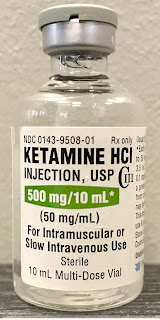Thoughts and Considerations for Anaesthetic Provision in Space
Thoughts and Considerations for Anaesthetic Provision in Space
PPT ANAESTHESIA IN SPACE LINK - LINK
SLIDESHARE LINK SLIDESHARE
BACKGROUND
It is currently possible to evacuate a crewmember from the ISS and return them to Earth for treatment within 24 hours; however, this will not be possible on an exploratory mission deeper into space
No human has yet required general anesthesia to be performed in space and it is not ethical or appropriate to test protocols on healthy crewmembers in space, making it difficult to plan appropriate contingencies for future longer-duration missions
ISSUES IN SPACE
Lack of space
Limited skillsets and lack of support
Availability of Drugs, IV fluids and medical equipment
Little monitoring
Need for flexibility and the ability to improvise appropriate solutions quickly
Increased levels of stress with potential negative impacts on performance
All astronauts undergo extensive selection and screening prior to leaving earth. Most are extremely fit and healthy individuals who would initially appear to benefit little from most preoperative interventions.
One important consideration might be preventative surgery prelaunch to prevent on-board emergencies later as it is not known whether the physiologic changes associated with spaceflight will alter the relative risks of developing acute appendicitis or cholecystitis in crewmembers undertaking deep space missions.
ANAESTHESIA IN SPACE
- It should be simple, protocol-driven techniques that use minimal drugs and equipment for performing general anaesthesia in space.
It has been advocated as the induction agent of choice.
It has ability to induce dissociative states of anesthesia
Provide both analgesia, sedation, and hypnosis
Can be administered via multiple routes (intramuscularly, intravenously, orally, intranasally, intrarectally)
Has ability of maintaining relative hemodynamic stability even in the relatively hypovolemic states that are likely to be encountered in space.
Ketamine can also be stored in either crystal or powder forms for long periods and remains stable over a wide range of different temperatures.
In addition, the relative contraindications to ketamine use (e.g., ischemic heart disease, valvular pathologies, epilepsy, severe arterial hypertension, or pulmonary hypertension) are not likely to be present in highly-selected astronauts.
TRACHEAL INTUBABTION
Any attempt at intubation in space is likely to be difficult for multiple reasons.
All intubation techniques in microgravity will necessitate both the intubator and the patient being firmly secured.
The patient is likely to have significant facial—and possibly airway—edema.
Gastroesophageal reflux is likely more common in space due to increased gastric acidity/decreased motility as described, which makes aspiration a considerable risk during general anesthesia using any supraglottic airway device.
To maximize chances of intubation success, Komorowski and colleagues advocate the use of neuromuscular blocking agents.
Depolarizing neuromuscular blocking agents should not be used during spaceflight because of the risk of cardiovascular collapse secondary to hyperkalemia.
Nondepolarizing muscular blocking agents can be used safely without this risk but there are concerns about the dose; based on findings in similarly immobilized patients and patients with neuromuscular diseases, resistance to these agents is expected and requires increased doses
BEST CHOICE - ROCURONIUM
It has a rapid onset of action and a rapid sequence induction is likely to be preferred given the increased aspiration risk.
It can now be rapidly reversed using sugammadex if needed (e.g., unexpected failed intubation, which is much more likely in space.
INTUBATION IN MICROGRAVITY
FLUID RESUSCITATION
In space a drug vial or fluid bag will contain a fluid more like foam
All iv fluid bags need to be degassed before use and likely need to be mechanically pumped in some way as flow will not be aided by gravity.
Astronauuts are likely to be both relatively anemic and hypovolemic, which increases the risk of cardiovascular collapse during anaesthetic induction in space.
All blood products have a limited shelf life to be carried on longer duration space mission.
TIVA a superior choice as scavenging of volatile gases could be challenging.
Traditional vapourizers would not work in microgravity.
It is essential to use lowest safe inspired concentration of oxgen
One important consideration include the need to take care off endotracheal cuff pressures in the microgravity environment.
REGIONAL ANAESTHESIA IN SPACE
In an emergency setting or situation with limited resources it would be possible to perform almost any limb operation with the knowledge of just three regional block techniques.
A Combined SCIATIC and FEMORAL nerve block would give complete anaesthesia of the leg.
An AXILLARY BRACHIAL block would anaesthetize the arm below shoulder.
TELEMEDICINE
Use of telemedicine technology has also been proposed to aid astronauts in space.
Main issue is the delay in transmission because of the extreme distances involved.





Comments
Post a Comment